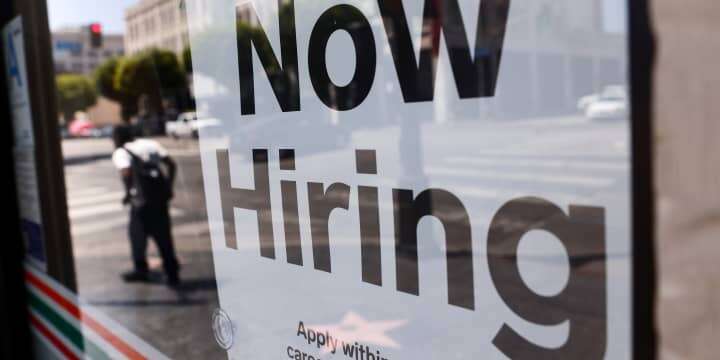September occupations report alludes to joblessness advantages’ muffled job in pandemic labor market

- The U.S. added 194,000 new payrolls and the workforce shrank by 183,000, as per the September occupations report gave Friday by the Bureau of Labor Statistics.
- The report is the first since government joblessness programs finished on Labor Day.
- The information offers the most recent proof that pandemic-period benefits didn’t assume a significant part in disturbing the work market, as per work financial experts.
The September occupations report gave Friday offered at this point more proof that pandemic-period joblessness benefits didn’t keep down the work market essentially.
Occupation development — 194,000 new payrolls — missed the mark regarding assumptions in September and decelerated from earlier months. The workforce, an action that counts laborers and those effectively searching for a task, shrank by 183,000 from August, as per the Bureau of Labor Statistics.
The information offers the principal depiction of the U.S. work market since upgraded government joblessness benefits finished on Labor Day. The September report recommends numerous specialists didn’t secure new positions or hop off the sidelines to search for work, regardless of the lapse of those advantages.
That Labor Day “bluff” affected around 8.5 million Americans, as per Labor Department information. Multiple million others got a $300 week by week advantage decrease.
A few financial specialists and policymakers accepted government benefits were keeping down the recuperation. It’s becoming more clear that different elements, particularly the Covid delta wave, have assumed a greater part in restricting monetary movement, as per work specialists.
“All the proof focuses toward pandemic [unemployment benefits] not being the primary factor,” as indicated by Nick Bunker, financial exploration chief for North America at the Indeed Hiring Lab. “The best gauge right presently is that it’s simply the pandemic.”
“This is as yet a delta-wave-time occupations report,” Bunker added.
Muffled job
The September occupations report is the most recent proof of the muffled job upgraded government benefits played. Those advantages incorporated a $300 week by week supplement, and help for bunches that don’t regularly meet all requirements for state help, like gig laborers and the drawn out jobless.
26 state lead representatives, all Republican however one, moved to pull out from the projects right on time, in June or July, to prod individuals back into the work market.
Notwithstanding, financial investigations discovered the withdrawals didn’t incite the expected occupation surge. Some even discovered adverse consequences.
“Truth be told, we track down that the deficiency of advantages is related with an unobtrusive decrease in work development, profit development and workforce cooperation,” Peter McCrory, a financial analyst at JPMorgan Chase Bank, wrote in an examination note a month ago.
The Labor Day cutoff influenced a bigger number of individuals than the June-July cluster, since it included high-recipiency states like California and New York. A few business analysts had expected there may be a more articulated effect after Labor Day subsequently — which hasn’t yet appeared.
While any certain effects on work development have been “generally muffled” up until now, that might change in the not so distant future and as families drain any developed reserve funds, as indicated by Daniel Zhao, senior financial specialist at place of work Glassdoor.
“Eventually, the September report won’t be the last word in the discussion over the effect of [unemployment insurance] benefits,” Zhao said.
All things considered, the positions report was comprehensively considered Friday to be as a disappointment subsequent to flooding position development over the spring and late-spring.
Occupation development in the private area arrived at the midpoint of 488,000 in the three-month time frame through September. That is a critical log jam from ongoing months: Job development arrived at the midpoint of 652,000 and 726,000 for the three months finished in August and July, individually.
“As surprising as the present work figures are, much more alarming is the decrease in the workforce,” said Neil Bradley, leader VP and boss approach official at the U.S. Office of Commerce. “We are amidst a laborer deficiency emergency and the quantity of potential specialists is contracting.”
Disclaimer: The views, suggestions, and opinions expressed here are the sole responsibility of the experts. No STOCKS MONO journalist was involved in the writing and production of this article.



